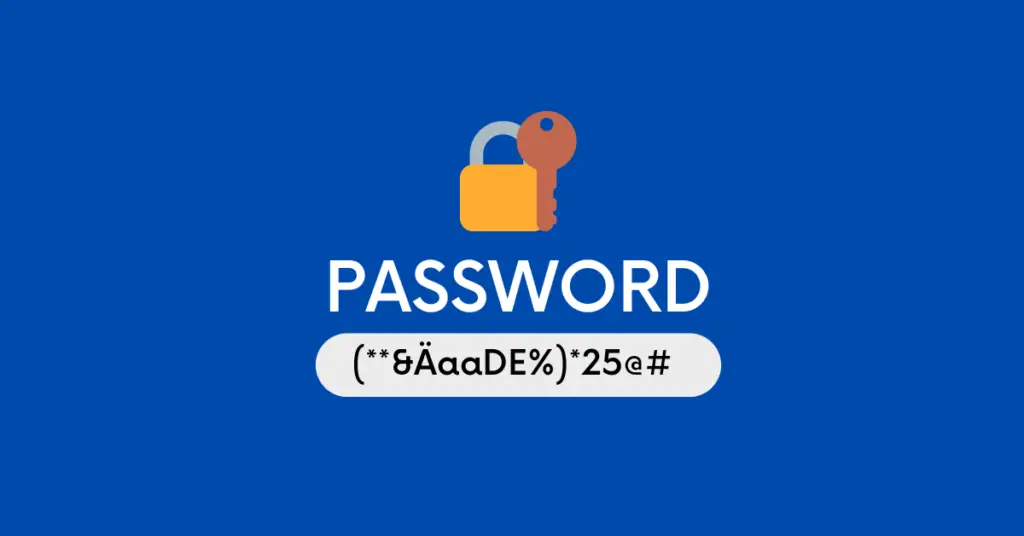In today’s interconnected digital world, where the threat of cyberattacks looms large, the importance of maintaining strong, secure passwords cannot be overstated. Passwords act as the first line of defense against unauthorized access to sensitive information. Here are 20 best practices for effective password management that can significantly enhance your online security.

Importance of Secure Passwords
The importance of secure passwords lies in the prevention of unauthorized access and data breaches. According to a Verizon Data Breach Investigations Report, stolen or weak passwords are one of the primary causes of data breaches, accounting for a significant percentage of incidents across various industries.
Moreover, studies have shown that cyberattacks are becoming increasingly sophisticated, with hackers utilizing advanced techniques to crack passwords and gain unauthorized access to sensitive information. The implementation of strong password management practices is crucial in mitigating these risks and safeguarding personal and confidential data.
1. Use Complex and Unique Passwords
Create passwords that are complex and unique for each account. Incorporate a mix of uppercase and lowercase letters, numbers, and special characters to increase complexity and avoid predictable combinations.
2. Length Matters
Opt for longer passwords as they tend to be more secure. Passwords with 12 characters or more are generally recommended by cybersecurity experts.
3. Avoid Common Passwords
Steer clear of using easily guessable passwords such as “password,” “123456,” or common phrases. Hackers often use automated tools to crack passwords, and common phrases are among the first they attempt.
4. Implement Two-Factor Authentication (2FA)
Enable two-factor authentication whenever possible. This adds an extra layer of security by requiring a second form of verification, such as a code sent to your phone, in addition to your password.
5. Password Manager Utilization
Consider using a reputable password manager to securely store and manage your passwords. These tools generate strong passwords, store them in an encrypted vault, and autofill them when needed.
6. Regular Password Updates
Change your passwords periodically. This practice reduces the risk of potential breaches, especially if a service you use has been compromised.
7. Be Cautious with Security Questions
Avoid using easily obtainable information for security questions, such as your mother’s maiden name or your birthplace. Opt for answers that are unique and difficult for others to guess or find online.
8. Phishing Awareness
Stay vigilant against phishing attempts. Be cautious of unsolicited emails or messages requesting your password or personal information. Verify the authenticity of the source before sharing any details.
9. Secure Wi-Fi Connections
Ensure that you use secure and trusted networks when entering passwords. Avoid public Wi-Fi networks for sensitive activities as they may be susceptible to eavesdropping.
10. Limit Access to Passwords
Restrict access to your passwords. Avoid sharing them with others unless absolutely necessary, and if needed, use secure means of sharing, such as encrypted files or password-protected documents.
11. Monitor Account Activity
Regularly review your account activity and set up alerts for any suspicious or unauthorized logins. Promptly report any unusual activities to the respective service provider.
12. Encrypted Backups
Back up your password manager’s encrypted vault. This ensures that if you lose access to your primary account, you have a secure backup to rely on.
13. Avoid Auto-Fill Features
Refrain from enabling auto-fill features on browsers, as they might store passwords in an easily accessible format, potentially compromising security.
14. Educate and Train
Educate yourself and others on the importance of password security. Conduct training sessions or provide resources on how to create and manage strong passwords.
15. Separate Work and Personal Passwords
Maintain separate sets of passwords for work-related and personal accounts. This minimizes the impact in case of a breach in one area of your life.
16. Regular Software Updates
Keep your devices and software up to date with the latest security patches. Outdated systems are more vulnerable to security threats.
17. Use Biometric Authentication
Leverage biometric authentication methods like fingerprint or facial recognition where available, as they offer an additional layer of security beyond passwords.
18. Avoid Storing Passwords in Plain Text
Avoid storing passwords in plain text formats, whether it’s in digital notes, emails, or other unencrypted forms that could be easily accessed if compromised.
19. Implement Account Lockout Policies
Implement account lockout policies that temporarily lock an account after a specified number of failed login attempts, thwarting brute-force attacks.
20. Regular Security Audits
Conduct periodic security audits of your passwords and accounts. Remove unused accounts, update weak passwords, and review access permissions regularly.
The adoption of robust password management practices is imperative in today’s digital landscape to protect against evolving cyber threats. By adhering to these best practices, individuals and organizations can significantly bolster their cybersecurity defenses and minimize the risks associated with compromised passwords.
Remember, a strong password is your first line of defense in the online realm, and taking proactive measures to fortify it is paramount in safeguarding your digital identity and information.
